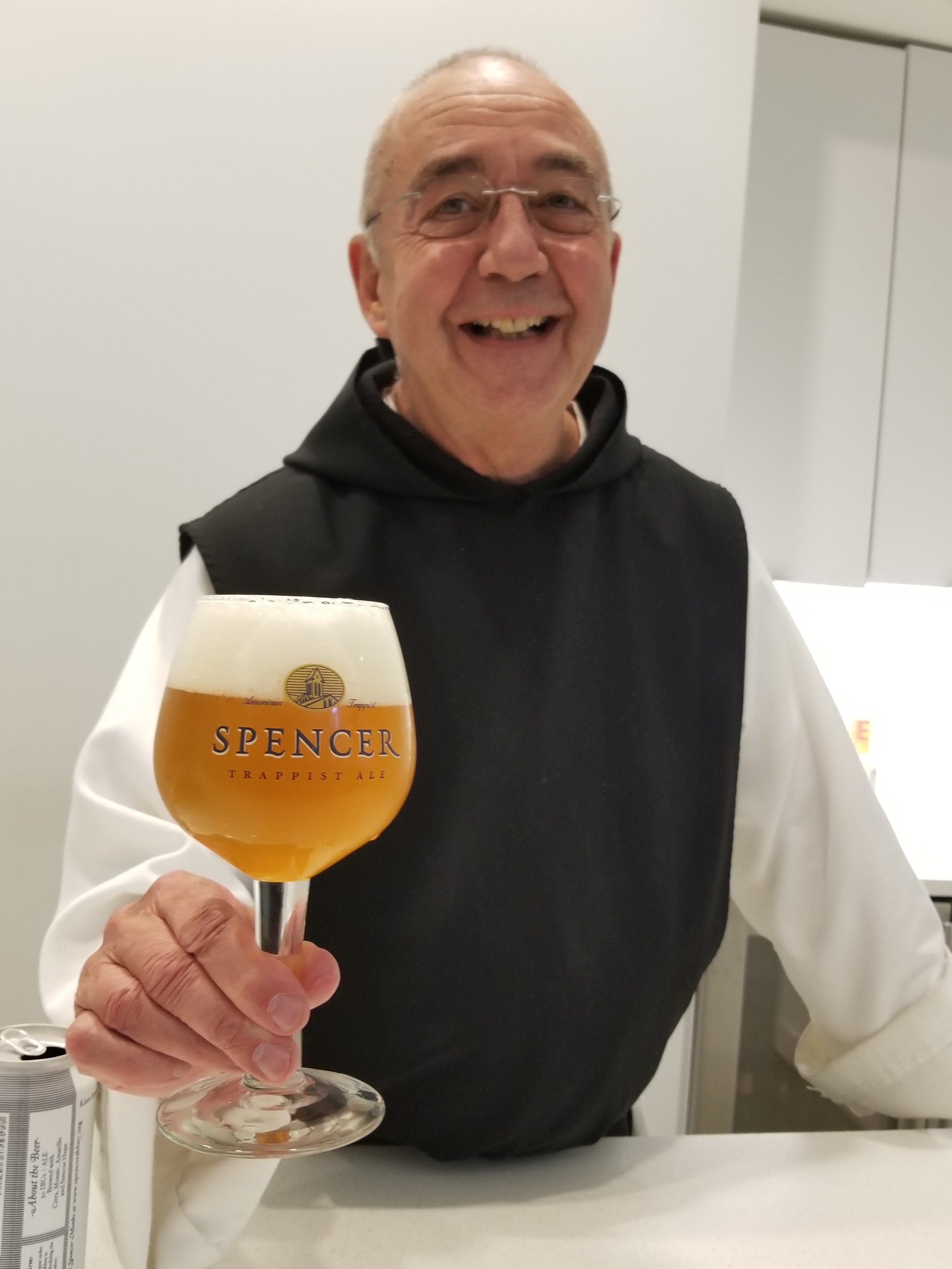Trappist Beer Is Now Made In the US
A visit to Spencer Brewery - owned and operated by Massachusetts monks
All photos by Phil Galewitz
Driving down a country road in central Massachusetts, it would be easy to miss Saint Joseph’s Abbey, where dozens of monks have been praying and living a quiet life on 2,000 acres since 1950. For decades, the monks made jellies and preserves to support the monastery and they still sell them, along with some religious books and artifacts, in a small white building at the front of their property.
But nearly a decade ago, the contemplative order located in Spencer, Mass. realized it needed another revenue source to support its livelihood and spearhead donations to charity. That’s when they got the idea to make beer. For centuries, a handful of monasteries have brewed beer in Europe, several to great success. Because Trappist monks only make enough beer to support themselves, the limited supply has sometimes created its own huge demand.
After two years of research visiting Trappist abbeys such as Orval, Chimay and Westvleteren in Belgium, the monks of St. Joseph enlisted a brewer to start brewing their own beer in 2014.
Father Keeley shares a beer
The monks did not go small when it came to the beer. They built a modern 50-barrel brewhouse at the back of their large agricultural property. Today, Spencer Brewery is the only Trappist brewery in the United States and the only one outside of Europe. Located 60 miles east of Boston, Spencer sells its beers across much of New England, though nearly half its sales come from overseas including in China and Japan.
Don’t make any plans to visit just yet, though. Like all Trappist breweries, its not open to the public as it sits in the monastery grounds which are designed for quiet reflection and prayer.
Father Isaac Keeley, director of Spencer Brewery, smiles when asked about whether the monks have recouped their investment in the large brewery, which was made possible by some small business loans. He said plans are in the works to start selling their beer later this year in the small gift shop where they sell the jams and jellies, along with, hopefully, a place to drink it.
While the brewery is not profitable yet, that hasn’t stopped the monks from donating thousands to several charities to help the poor and disadvantaged across the state and region. “Our business adviser came in and saw our struggles and said, ‘You are giving money away and you can’t afford this.’” Keeley recalled. “But that is what we do. If we waited until everything was done we would never do it.”
Keeley said he wasn’t really a beer drinker until he became involved in the brewery. But since then he seems to relish in the role as spokesperson for the brewery that has put the abbey on the map for craft beer lovers.
Holy beer!
Spencer Brewery’s top beer is its Trappist Ale, a smooth tasting Belgian-style ale that is unfiltered has nice fruit accents and is full bodied. Like other Trappist breweries, Spencer leans toward bolder, higher-alcohol beers that age well and typically sell in 750 ml bottles. The Spencer Monk Holiday Ale is a lightly spiced 9 % ABV ale that’s heartwarming for a cold winter day. Another of their top selling beers is the Spencer Monks’ Reserve Ale, a classic quad in the Belgian tradition. The 10.2% ABV ale is fragrant and robust with a malty profile that provides a warm finish.
As an American Trappist brewery, Spencer also makes a couple of IPAs as well as a tasty pilsner and even a Vienna lager. The brewery has started barrel-aging, using chardonnay barrels for its peach saison and also bourbon barrels to age its Reserve Ale.
While 54 monks live on the property, Keeley is one of only five working on the brewery, which employs four professionals to help with the brewing. He said the monks enjoy beer during Sunday dinner.
What is Trappist beer?
Trappist beer does not define the style of the brew but how its made. To be recognized as a Trappist brewery by the International Trappist Association, the beer must be brewed within walls of a Trappist monastery, either by the monks or under their supervision. Keeley said the association was initially leery of having a brewery in the United States, fearing it would be making a high volume, but lower quality beer. “But once they drank our beer they said it was too good to refuse,” he said.
Once a year, the brewery and monastery opens its doors to the public. In June, more than 7,000 people came to the grounds to try some beers and walk around the serene grounds. Keeley said the brewery opening in 2014 coincided with waning American interest in Belgian-style beers. “That has made growing the business challenging,” he said
Making the fine tasting beer has proven to be the relatively easy part of the operation. “It’s the sales and marketing that has been the hard part,” Keeley said Nonetheless, Keeley said the brewery has been compatible with monastic community life, which is about living off the land and dedicating one’s existence to spiritual life.
Keeley and the brewery itself do exhibit a lighter, less serious side. That can be seen with their pumpkin beer that’s already in stores by early August. Its name?
The Monkster Mash.



